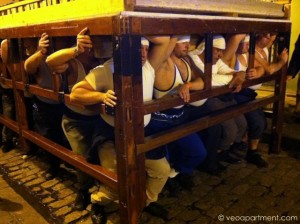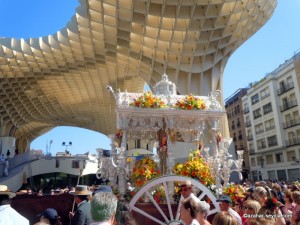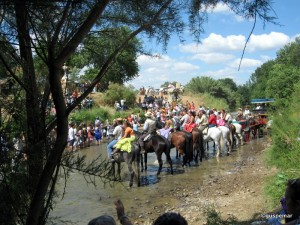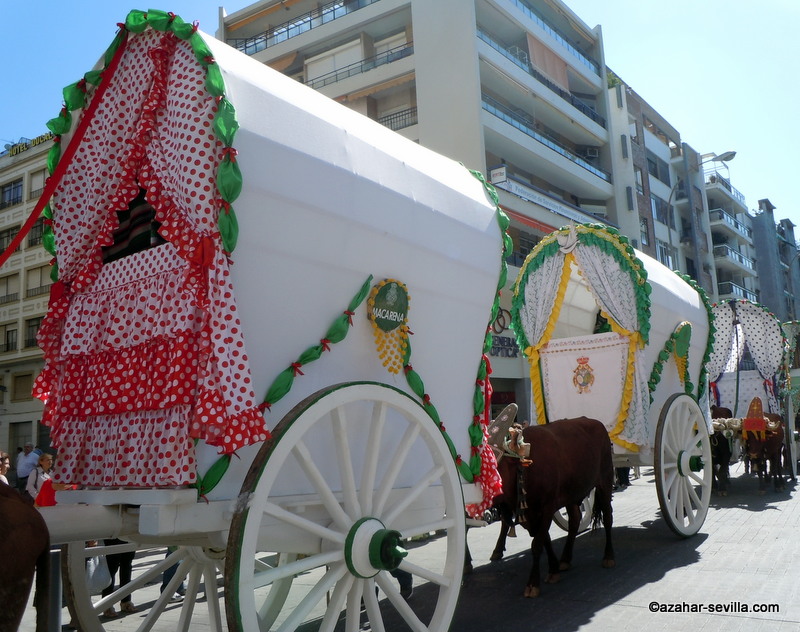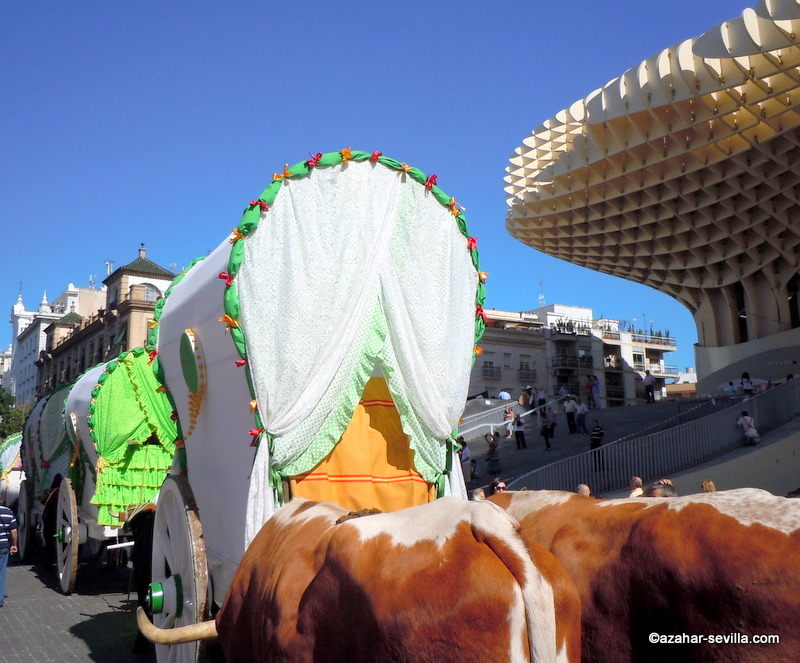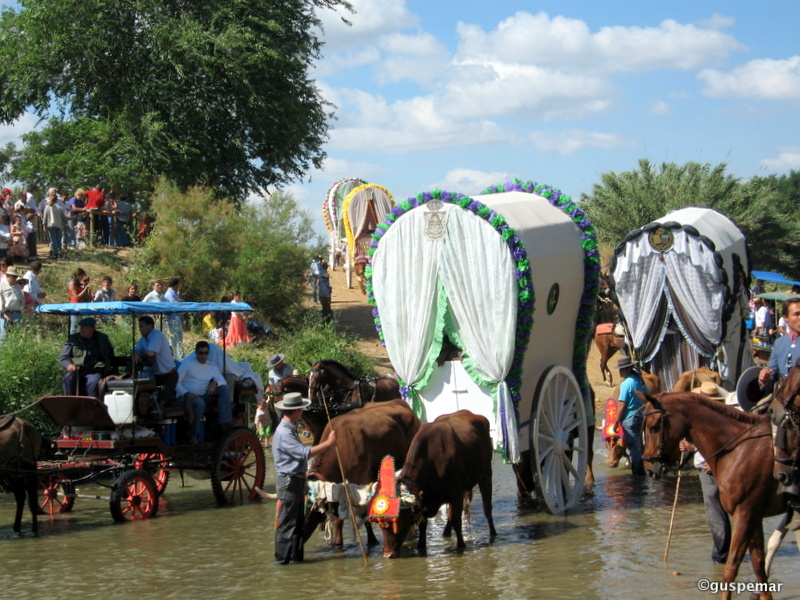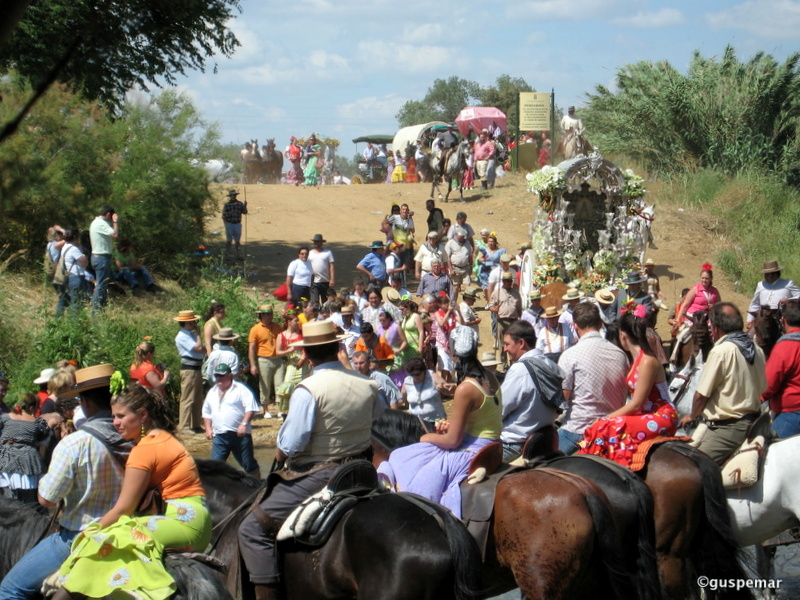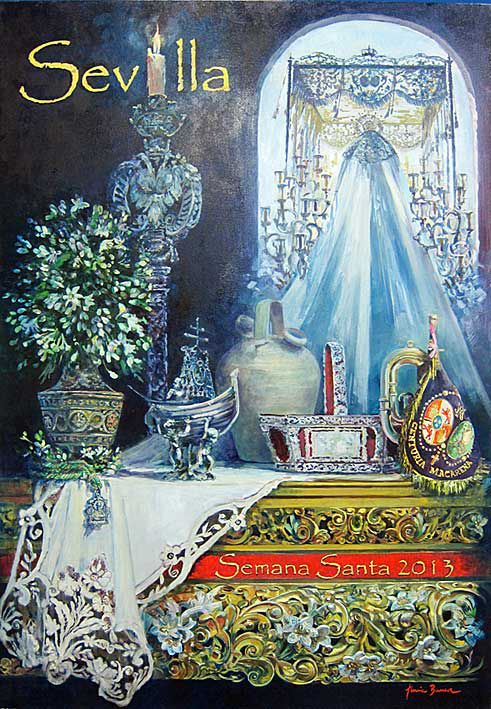 If you find yourself in Seville in the week before Easter, and nobody has told you what goes on here during Semana Santa (literally Holy Week), you may be in for a surprise. Why are there so many people in town? Why are the main street by the cathedral and the square beyond lined with chairs? Just who are those strange people with towels round their heads? And the even stranger people with the pointy hoods and cloaks, for all the world like some surreal multi-coloured gathering of the Klan (they’re not, just so you know)? Fear not, all will be revealed in our handy beginner’s guide to Semana Santa in Seville.
If you find yourself in Seville in the week before Easter, and nobody has told you what goes on here during Semana Santa (literally Holy Week), you may be in for a surprise. Why are there so many people in town? Why are the main street by the cathedral and the square beyond lined with chairs? Just who are those strange people with towels round their heads? And the even stranger people with the pointy hoods and cloaks, for all the world like some surreal multi-coloured gathering of the Klan (they’re not, just so you know)? Fear not, all will be revealed in our handy beginner’s guide to Semana Santa in Seville.
Religious processions are hardly unusual in Spain, but the Easter Week processions in Seville take them to another level. During the course of the week around 60 processions will wend their way from their home churches to the Cathedral and back again, which for those furthest away can mean a journey of up to 14 hours. The religious purpose of the processions is to take the sacred statues, usually one of the Christ depicted in one of the stages of the Passion, and one of the grieving virgin, from where they “live” in their various churches and chapels to be blessed in the Cathedral. Each procession is organised by its own Hermandad (brotherhood), and the week’s celebrations are co-ordinated collectively. The oldest brotherhood dates back to the 14th century, and in late mediaeval times they played a role similar to the guilds. After a period of decline in the 19th century, the 20th saw a progressive revival and the fixing of many of the forms and traditions we see today.
The statues are carried on floats known as pasos, by groups of men hidden underneath (these are the costaleros, the ones with the towels on their heads to protect them from the weight), whose movements are controlled by an overseer (capataz), usually by a system of coded knocks. Both the pasos and the statues, some of which are important artworks in their own right, are often ornate and gilded, the virgins decked with flowers beneath a canopy, and the sight of them as they sway down the streets is surprisingly moving, even for the non-religious.
They are accompanied on their journey by the Nazarenos and Penitentes (the ones in the cloaks and hoods, worn to preserve anonymity) carrying candles or crosses, various functionaries, and the brass bands who are responsible for the distinctive music that seems to be everywhere during this week. The largest processions can take up to an hour and a half to pass.
Although the final procession is on Easter Sunday, the climax of the week for most people is in the early hours of Good Friday morning, when six of the most popular processions take place, including both of the Virgenes de Esperanza (Triana and Macarena), El Silencio and Jesus de Gran Poder. If you’re here for Holy Week it’s worth staying up all night to see some of these.
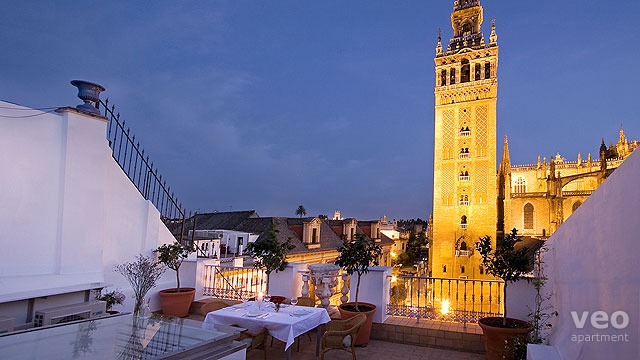
If you are here for Semana Santa bear in mind that you’ll pay a premium price for apartments and hotel rooms (anything up to double), and that most of the bars (in the centre at least) won’t be serving tapas but rather larger plates (raciones), and will be very crowded. In fact, the whole city will be crowded, and in the afternoon and evenings the area around the cathedral, and through Plaza San Francisco to La Campana, is often impassable and may interfere with any sightseeing strolls you have planned.
On the other hand, it’s an unusual and interesting experience, whatever your religious affiliations or non-affiliations, and maybe one that everyone should catch a glimpse of just once in their lives.
Veoapartment still has some apartments available on or close to the Cathedral and main procession routes in Laraña, Constitución, and best of all, right by the cathedral in Calle Alemanes.
